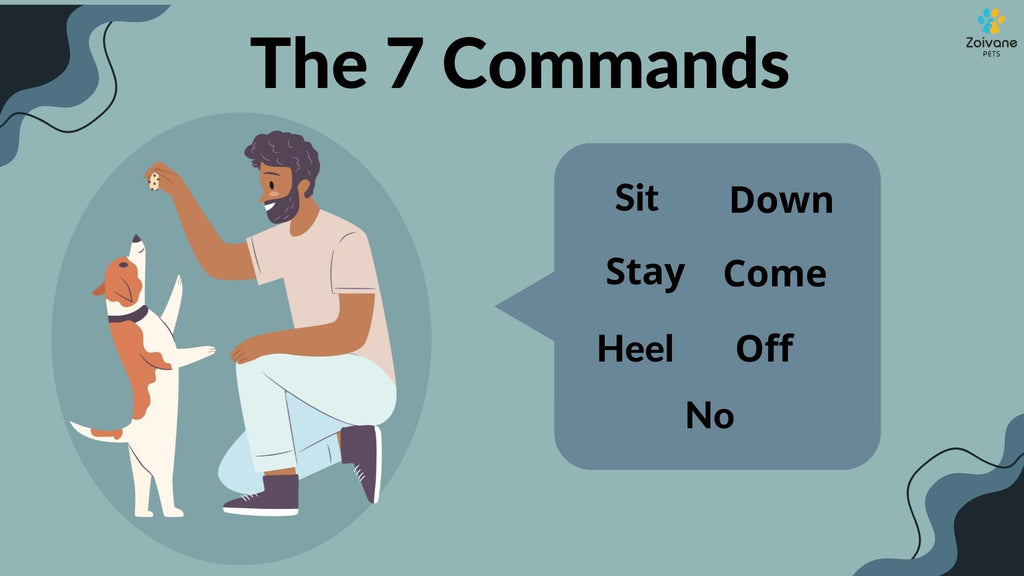
7 Essential Commands to Teach your Dog Today!
Getting a dog home is the first step, be it a puppy or an adult, a purebred or a mixed rescue. But, trust us, this is only the beginning of your Pet Parenting Journey & the challenges that come along. One of the first aspects to teaching & bonding with your cute canine is “Obedience Training”.
According to US-based Expert Trainer Brandon Mcmillan there are 7 important commands a Pet Parent must teach their dog. With several short 10-15 minute practice sessions everyday, most dogs / puppies can master these basic commands in just a week or two.
 1. Sit
1. Sit
According to Mcmillan, the command “Sit” should be the first to be taught. It is one of the easiest commands to learn, and since it’s a rest-based transition command, once achieved, a dog can move on to other advanced actions or commands.
Step1: Hold a treat in your hand.
Step 2: Move the treat above the dog’s head and say the trigger word, “Sit”
Step 3: Once achieved, Praise!
Step 4: Repeat
2. Down / Lay Down
Mcmillan compares his favourite command “Down” with cutting a vehicle’s ignition. While standing, a dog’s attention span & stance are difficult to manage. But when he’s laying down, you’ve ideally “cut the engine”, thereby making them restful & more attentive to your words & actions. This command also enables your doggo to more advanced tricks like rolling over or playing dead.
3. Stay
In my opinion, “Stay” is the most important command for any dog to learn. Mcmillan recommends teaching this command when your dog is either tired or hungry, so that he won’t get too hyper and focus. It is important as it keeps your precious pet away from incoming or potential threats. “Stay” isn’t the easiest command to master, so stay patient and reward your doggo with a treat every time you see a learning curve.
4. Come
If you plan on taking your dog out without a leash someday soon, then he must know “Come” when called. The street, park or the road, any person, animal or place could be a potential threat. Which is why it is important that your dog “stays” with you when you’re going out.
5. Heel
Dogs of all sizes should learn this command, especially if you live in an urban-scape where there is not much space around you. This skill is even more important to learn for large or strong breeds / pups. Once a dog learns “Heel”, walking or going out with him will certainly get much easier and pleasant.
6. Off
One of the most common issues that Pet Parents face after they get a new pet is keeping him “off” furniture or visitors. Mcmillan suggests using Negative Reinforcement or discouraging behaviour to dissuade your pet from getting on people or furniture. Some examples of discouraging behaviour could be turning your back, grabbing their feet or shaking a plastic bottle filled with pennies while saying “Off”.
7. No / Leave
The simplest, most useful & all-purpose command to teach your puppy is “No”. Teaching this command is very important as it does 3 very important things. Firstly, it establishes boundaries. Secondly, it enables a chain of hierarchy & teaches your dog who’s boss. Thirdly, it simply enables you to control your dog’s behaviour and dissuade them from doing anything you don’t want them to do.
To summarise:-





Leave a comment
This site is protected by hCaptcha and the hCaptcha Privacy Policy and Terms of Service apply.